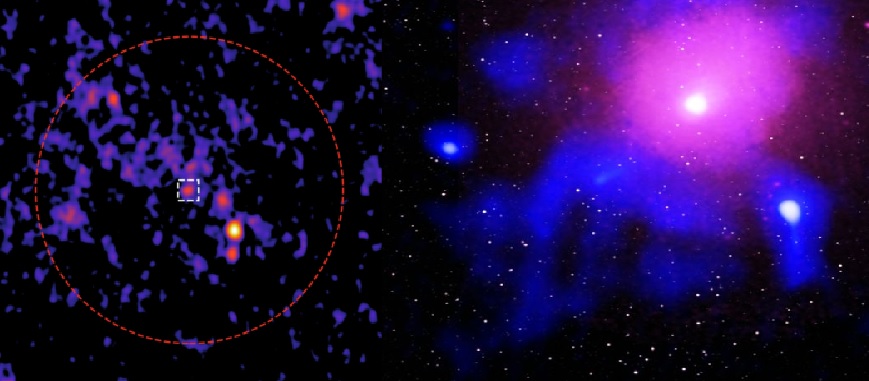Mysterious Radio Wave in Heart of Ancient Star Cluster Might be a Rare Black Hole

Space News ,World :- In a groundbreaking discovery, scientists using the Australia Telescope Compact Array (ATCA) have detected enigmatic radio waves at the core of the Milky Way's second-brightest globular cluster, 47 Tucanae. The signal, believed to be emitted from a potential medium-sized black hole, would mark the first-ever detection of its kind.
Globular clusters, ancient star groupings scattered throughout our galaxy, are known for their densely packed stars. 47 Tucanae, boasting over a million stars within a 120-light-year diameter sphere, is observable even with the naked eye.
The International Centre for Radio Astronomy Research (ICRAR) team, conducting a comprehensive 450-hour radio measurement campaign with ATCA, has produced the most detailed radio image of 47 Tucanae to date. Positioned approximately 14,500 light-years from the sun, the peculiar radio wave source was pinpointed at the cluster's center.
Researchers speculate that the signal may originate from either a medium-sized black hole or a pulsar—a rapidly spinning neutron star emitting radio waves. The discovery of a medium-sized black hole would represent a scientific breakthrough, bridging the gap between stellar black holes and supermassive black holes found at galaxy centers.
Intermediate-mass black holes, believed to exist in globular clusters, have eluded clear detection until now. Alessandro Paduano, lead author of the study and former Ph.D. student at Curtin University, notes, "If this signal turns out to be a black hole, it would be a highly significant discovery and the first-ever radio detection of one inside a cluster."
The ATCA image of 47 Tucanae rivals the anticipated images from the Square Kilometer Array Observatory (SKAO), set to become the world's most sensitive radio telescope upon completion later this decade. The SKAO, currently under construction in Western Australia and South Africa, comprises thousands of radio antennas.
Tim Galvin, a research scientist at CSIRO and co-author of the study, highlights the project's technological advancements, stating, "Alessandro's research represents a culmination of years of research and technological advancements, and ATCA's ultra-deep image of 47 Tucanae represents just the beginning of the discoveries that are yet to come."
Arash Bahramian, overseeing the project at Curtin Institute of Radio Astronomy, emphasizes the achievement of achieving SKA-quality science with current-generation telescopes. He envisions the technique's future role in enhancing the power of SKAO to detect the faintest cosmic objects, offering a glimpse into the exciting capabilities of the next generation of radio telescopes.


